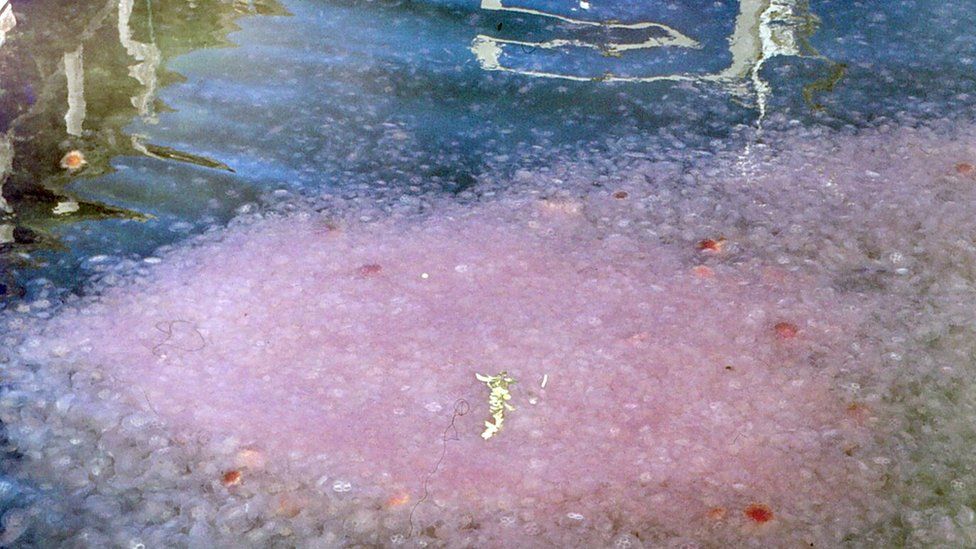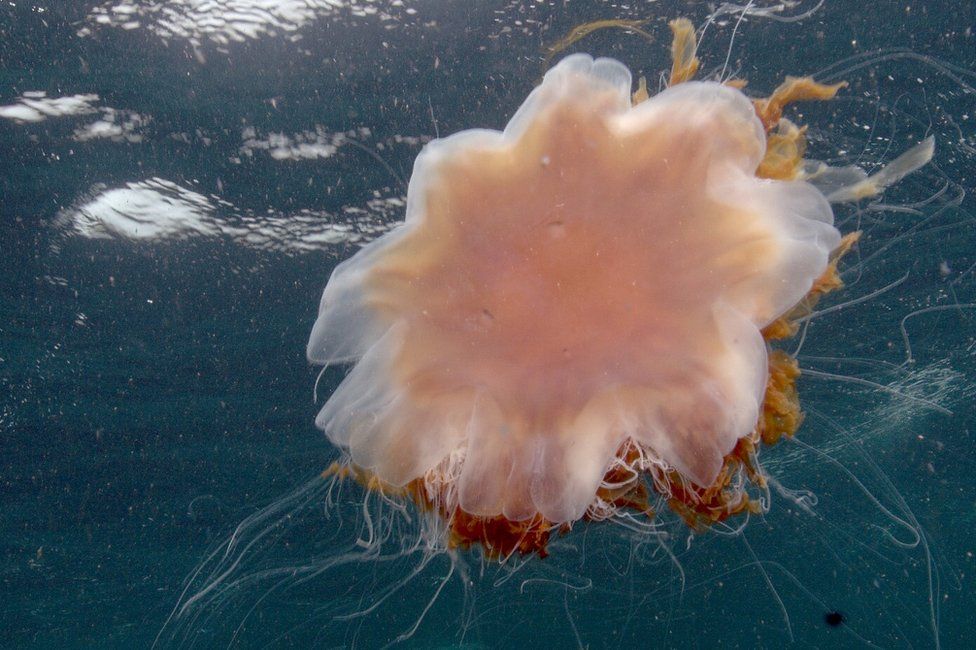According to the Met Office, April and May saw the highest global sea surface temperatures for those calendar months in a series dating back to 1850.
The picture becomes even more stark when you consider regional examples.
May saw a record-breaking increase in temperature in the North Atlantic.
The seas surrounding the UK and Ireland have experienced some of the most extreme marine heat increases on Earth, according to the European Space Agency (Esa).
Esa and the Met Office analysis shows that water temperatures are up to 3 to 4 C above average for this time of year in some places.
From Durham to Aberdeen on the east coast of the United Kingdom and off the coast of northwest Ireland, the sea is especially warm.
You may view this as excellent news if you enjoy swimming in the sea.
In June, I returned to the North Atlantic for the first time this year at Portstewart.
One of the regular swimmers remarked on how warm it was, though I still thought it was very cold.
I said to myself, "Tell my butt cheeks that.".
Air temperature precedes sea temperature.
The warmest months for the sea in Northern Ireland are August and September, while July typically sees the highest air temperatures.
Regular sea swimmers will also be aware that jellyfish are likely to reappear as the sea warms.
The typical jellyfish season runs from April to October, and right now, jellyfish are swimming along the Irish coast and have even been spotted on some of our local beaches.
Fortunately, the Box jellyfish, which is common in Australia, does not inhabit the waters off the coast of Ireland. In Ireland, jellyfish stings are frequently not fatal but can be excruciatingly painful.
Stingers, or stinging cells, are found on the tentacles of jellyfish. .
These stingers, which contain venom, can be released when tentacles are brushed against. .
The stingers of some jellyfish may not be long or sharp enough to pierce human skin, and in most cases, human skin acts as a natural barrier to stings. .
It might be simpler to pierce more delicate areas, like the lips and eyes.

The most prevalent jellyfish species, the Moon jellyfish, which is about the size of a dinner plate, is one of the six or seven species that are frequently found in Irish waters.
The good news is that, despite their tendency to swarm and transparency, they are generally harmless to people, even though they have been known to obstruct boat engines.
The brownish-colored Lion's Mane and its relative, the Blue jellyfish, should be avoided by swimmers.

Both are common during the hotter summertime, and the Lion's Mane has already been seen off the north coast.
They have long tentacles that, though not fatal, can deliver a nasty sting.
The stinging cells will continue to function even when detached from the main body for a considerable amount of time. The tentacles can separate and become attached to chains on a boat, for example. .
If at all possible, regular sea swimmers and vacationers should stay clear of jellyfish. For no reason, do not touch them.
Many online groups for people who enjoy swimming in the ocean post information about jellyfish sightings.
If you happen to see a jellyfish floating in the water, don't try to move it or wave it away; instead, just step out of its way and let others know it's there.
The Mauve Stinger is yet another venomous species that is more prevalent in the Mediterranean Sea but has been known to swim north when the climate is comfortable and stable.
It can also kill other marine life, including fish, and has a propensity to swarm.
At a salmon farm in Glenarm, County Antrim, a school of fish was completely wiped out in 2007 by a swarm of Mauve Stingers. .
The ideal temperature will be reached earlier and stay well into the autumn as a result of warming seas, extending the jellyfish season and making species like the Mauve Stinger more prevalent.
As the optimal temperature zones move north, so will the distribution of plankton as a whole.
The fact that seabirds and small fish are migrating northward, says Dr. Brown, a marine biologist on the Ulster Wildlife Council, is evidence that this is already happening.
New species of small fish and birds from the Mediterranean may also migrate north, though this is less likely.
There are some additional factors to take into account, as increasing sea temperatures may cause a change in the natural sea fronts, which, like weather fronts, mark the boundaries between air masses and indicate a change in temperature between one body of water and another.
Marine life may be impacted if these natural barriers shift.







